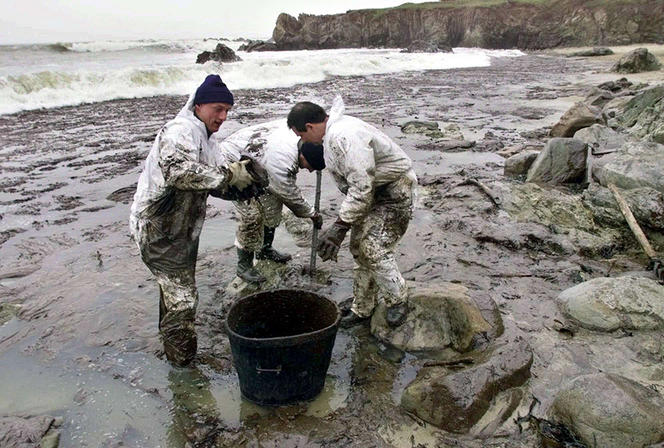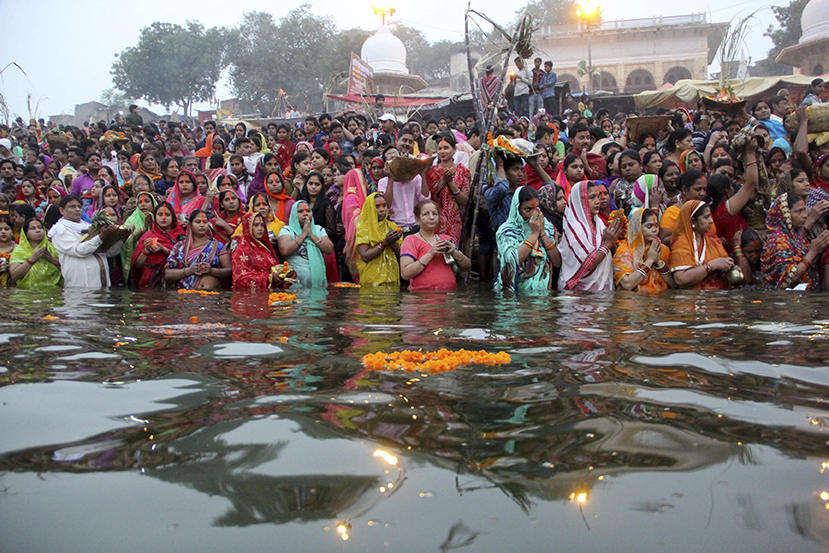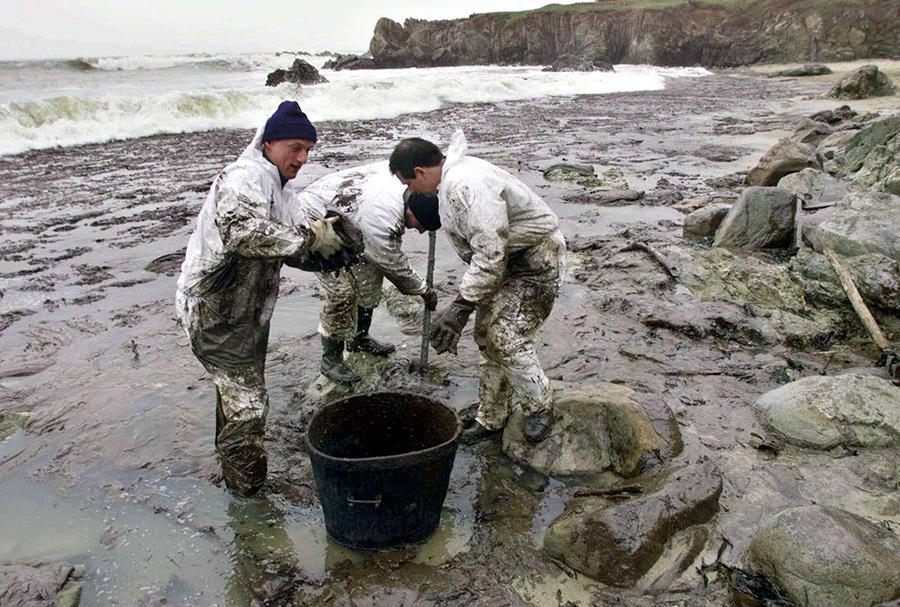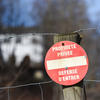You are here
Can the Law Save Nature?

It was a world first in legal history. In March 2017, two rivers were successively granted their own legal personality. In New Zealand, the Whanganui river, the country’s third longest watercourse, has been recognized as a “living entity with the legal status of a person” by Parliament. As with minors, two legal custodians have been appointed to defend its interests. In India, the Ganges and one of its tributaries, the Yamuna river—both sacred—have become legal subjects. This ruling by the High Court of the Himalayan state of Uttarakhand should make it possible to combat pollution caused by industrial waste and sewage systems more effectively.
Beyond the highly symbolic character of these rivers in Maori and Hindu cultures, these decisions are symptomatic of the legal debate raging at the beginning of the new millennium. They boil down to a simple question: how to better protect nature? “Environmental law emerged in the 1970s,” points out Laurent Neyret, professor of private law at the University of Versailles-Saint-Quentin-en-Yvelines. “At the time, it was primarily concerned with procedural compliance, permission to build a motorway, factory or housing block, or waste discharge thresholds… Back then, environmental law was mostly preventive. Today, the scale of the environmental and climate crisis is such that it is necessary to go much further.”

Protecting nature in its own right, by making it a legal subject, is one possible avenue. “In France, after the sinking of the Erika oil tanker in 1999, some legal minds were tempted to ‘make nature a person,’” says Neyret. Yet in France—as in Western legal systems more generally—this line of reasoning failed to convince. In contrast, the notion of nature as a legal person already existed in Latin America. The New Constitution of Ecuador, adopted in 2008, recognizes nature as a legal subject with the right to be respected and restored if damaged… It was in accordance with this law that Chevron-Texaco was sentenced to a record fine of 9.5 million dollars for damage to the Amazon rainforest (a sanction that has yet to be enforced). In 2011, Bolivia in turn passed a law on “Mother Earth,” “Pacha Mama,” which considers the benefits of nature in itself and not simply those it provides to humankind.
Repairing “ecological prejudice”
Although not considering nature a legal entity in its own right, other concepts have emerged in recent years, all aimed at protecting it better. This is true of the notion of “ecological prejudice,” introduced in France for the first time in the Biodiversity Law of 2016 but recognized in the US as of the early 1970s, with the creation of the powerful Environmental Protection Agency (EPA)—an administrative authority that is entitled to conduct investigations as well as negotiate with polluting manufacturers and impose sentences. “Harm to the environment implies direct consequences for people (an oil spill preventing fishermen from working, damage to a region’s image, etc.), but also significant destruction of biodiversity—which is what ecological prejudice seeks to repair, through the restoration of the affected area, or, failing that, through the payment of damages,” Neyret explains.
In cases where the damage is irreversible though, assessing its extent can prove a real headache. How does one evaluate the price of nature in and of itself? How much for a wetland destroyed by building work, or for a forest that has been burnt down? “Some have claimed that environmental reparation is not feasible, on the pretext that ‘nature does not have a price,’” the legal expert continues. “Yet we do have bodily harm as a model, which has been accepted for a hundred years or so and determines the cost of the death of a child or loss of an arm…” In a sign of the changing times, the damages awarded to the associations and local authorities following the Erika appeal proceedings were set at 13 million euros purely on the grounds of environmental loss—a first in France.
But is the concept of ecological prejudice applicable to any harm done to nature? “To establish prejudice, it is necessary to prove responsibility,” points out Agnès Michelot, lecturer in public law at the University of La Rochelle. “Yet it is not always possible to demonstrate causality or determine responsibility.” This is particularly true when it comes to the extinction of animal species. Many NGOs advocate that the occurrences recorded by the International Union for Conservation of Nature, (IUCN, which compiles the list of endangered species) give rise to legal action. “Formerly identifying the chain of decisions that culminated in this fateful outcome very often proves impossible however, considering that these events are the result of multiple factors,” Michelot notes.

Judges lead the fight
Even though it is making progress —albeit hesitant, the law enacted at the highest echelons of the state remains patchy from an environmental perspective, and an increasing number of citizens view it as inadequate. As a consequence, “there is disappointment in the existing regulation, which translates into a phenomenon of judicialization to restore the balance,” Neyret points out. In other words, citizens are prepared to go to court to bring about changes if they believe the state is not doing its job. Global warming perfectly illustrates this type of lawmaking: very recently, several lawsuits filed against governments have resulted in unprecedented decisions by the courts.
In 2015, the Urgenda group took the government of the Netherlands to court for “wrongful negligence.” Along with 800 Dutch citizens, it accused the State of not taking sufficient action against climate change and putting future generations at risk. Not only was the case deemed admissible by the judge—the first time a climate issue got past the admissibility stage, anywhere in the world—but Urgenda actually won against the Dutch government, which the court ordered to review its greenhouse gas emissions commitments. “Here the courts have completely moved away from the polluter-pays principle, with no direct causal link being established,” comments Christel Cournil, a lecturer in public law at Paris 13 University and a member of the Droit et Climat network. “Furthermore, Urgenda did not claim damages, because there had not been any wrongdoing as such. But the court ruled that the Dutch State was responsible for its inadequate policy, and that was a first!”
In Pakistan, again in 2015, a farmer brought a case to the Lahore High Court on the grounds that the passivity of the Pakistani Minister for Climate Change was harming his “fundamental rights.” Pakistan is one of the countries most affected by climate change—floods and intense droughts—and this is threatening the agricultural production on which half the population depends for their survival. The High Court ruled in favor of the farmer, judging that the government had taken no concrete measure to implement the national climate action policy announced in 2012.
Towards specialized courts?
These decisions have had a snowball effect and sparked new ideas. In 2016, for the first time, one of the lawsuits filed by the US organization Our Children’s Trust, which fights for the right of future generations to a livable environment, was given the green light by a court in Oregon. In France, the association “Notre affaire à tous” is preparing an appeal against the State on the issue of climate change, while in Switzerland, a group of grandmothers, the “Swiss Grannies,” has taken legal proceedings against the State on the basis that global warming has harmful effects on their health …
“The most incredible thing in all these cases is that citizens have succeeded in having their government condemned for climate policy, whereas international treaties, starting with the agreements signed at the successive COPs, are impotent when it comes to demanding sanctions against countries that do not uphold their commitments,” Cournil points out. “It is as though a new world order is emerging, where governments are held to account by the rank and file!” And the legal expert points to a further sign of this change: the “greening” of regional human rights courts—the European Court of Human Rights, the Inter-American Court of Human Rights, and the relatively young African Court on Human and Peoples’ Rights.
“These courts increasingly find themselves ruling on environment-related cases. In Europe, for example, the issues under examination range from the freedom of expression of environmental activists to cyanide pollution in several streams in Romania following the Baia Mare mining disaster in 2000 …”. These environmental lawsuits do however have their limitations. “These jurisdictions lack resources, which means that they can pronounce judgment only in cases of direct, certain and proven damage," notes Cournil. “They will find it difficult to rule on climate issues, for example.”

Should specific courts be set up with regard to environmental crimes and infractions? Such courts already exist in India as well as in Chile, where tribunales ambientales, environmental courts, were established in 2012. Some legal minds go further by demanding that an International Criminal Court be created to judge “ecocides,” crimes against the environment, modeled on the International Criminal Court in The Hague (Netherlands) for crimes against humanity. “I’m all for it, but it will take time. For now, we will have to make do with the existing jurisdictions and intervene wherever it is already possible,” remarks Neyret. The concept of “ecocide,” for which there is no final definition, also needs to be clarified, explains the specialist, who recently published a book on the subject. “We are probably heading towards the notion of a deliberate violation, an intentional act perpetrated as part of a more generalized and systematic activity that causes serious and irreversible damage to the security of the planet.”
Developing preventive policies
While recognizing the usefulness of litigation, Michelot wants to privilege a more upstream approach. Alongside the French climatologist Jean Jouzel, she is campaigning for a new preventive law that would inform all fields concerned by climate change and its consequences: health, rural and urban planning, agriculture and energy, as well as insurance law, etc. “Public policies can no longer be drawn up without taking global warming into account,” she argues. “In the health sector alone, we know that cardiovascular risks increase with very hot weather, that respiratory risks are heightened in particulate pollution episodes, and that tropical viruses are acclimatizing to the temperate regions…” The opinion on climate justice that the two experts delivered to the French Economic, Social and Environmental Council (ESEC) in September 2016 establishes a direct link between environmental instability and economic and social precariouness: “The law needs to take into account the fact that climate change will affect the poorest, who lack the resources to adapt,” says Michelot.
____________________________________________________________
The “Monsanto Tribunal,” a citizens’ trial
On April 18, 2017, the International Monsanto Tribunal found that the practices of the US firm violate several rules of international law, such as the right to a healthy environment, the right to health, the right to food and the freedoms of expression and scientific research. These practices, it went on, could be akin to ecocide. In an advisory opinion, this citizen-led tribunal composed of international judges and chaired by Françoise Tulkens, former vice-president of the European Court of Human Rights, ruled that “since the early twentieth century, Monsanto has marketed highly toxic products that have contaminated the environment and permanently sickened or killed thousands of people around the world.” It singles out Agent Orange, a mixture of herbicides developed by the manufacturer and used by the US army during the Vietnam War, and Roundup, the most common herbicide in the world. Around thirty witnesses, experts and scientists from around the globe were called to testify during the session, which was symbolically held at The Hague (the headquarters of the International Criminal Court) in October 2016. “Although not binding, the opinion delivered by the Monsanto Tribunal aims to provide solid arguments for future legal action against the multinational worldwide,” Christel Cournil explains. Pending the creation of an International Court for environmental crimes?



















